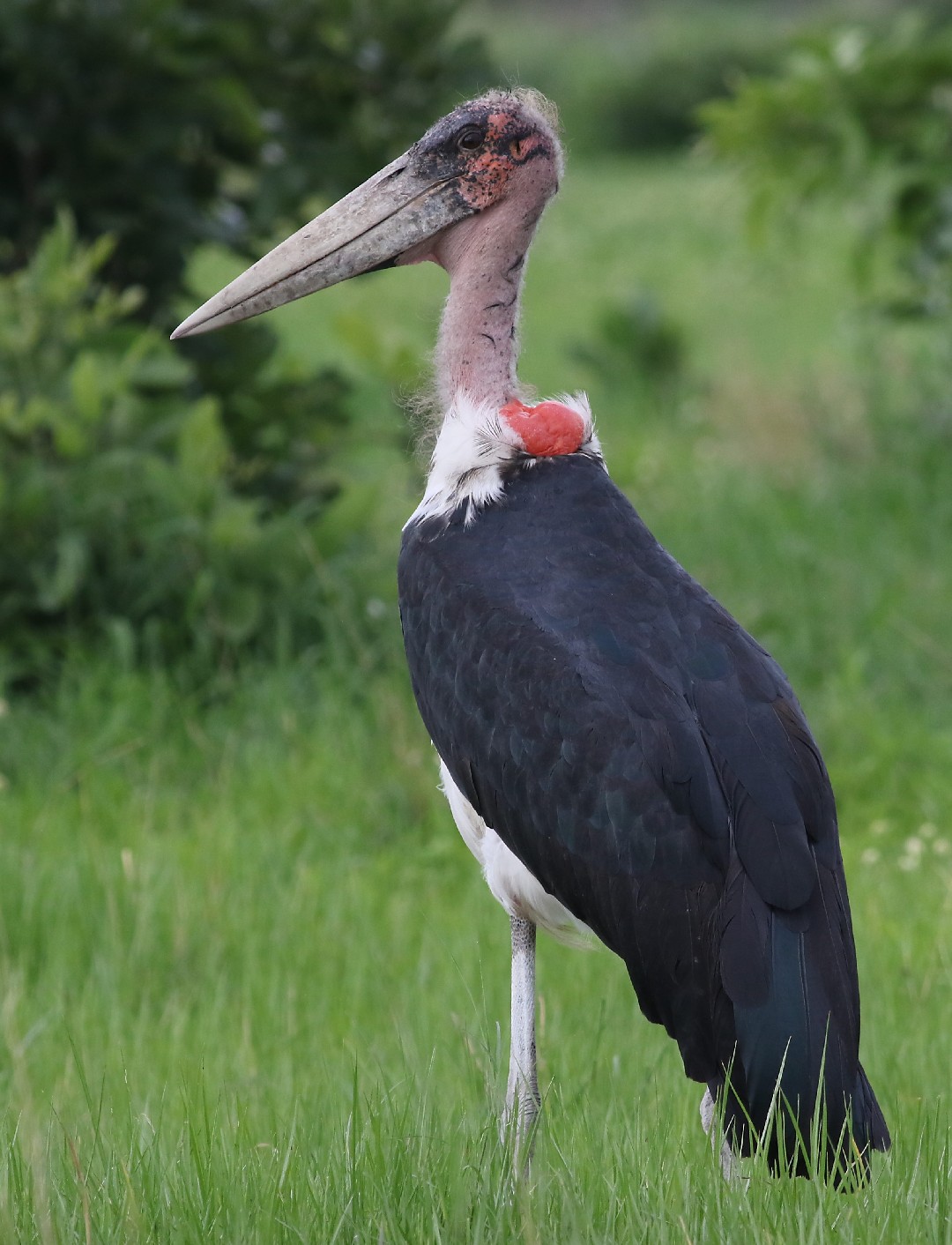Marabou Stork
A species of Adjutants and Marabou Scientific name : Leptoptilos crumenifer Genus : Adjutants and Marabou
Marabou Stork, A species of Adjutants and Marabou
Botanical name: Leptoptilos crumenifer
Genus: Adjutants and Marabou
Content
Description General Info
Description
The marabou stork is a massive bird: large specimens are thought to reach a height of 152 cm (60 in) and a weight of 9 kg (20 lb). A wingspan of 3.7 m (12 ft) was accepted by Fisher and Peterson, who ranked the species as having the largest wing-spread of any living bird. Even higher measurements of up to 4.06 m (13.3 ft) have been reported, although no measurement over 3.20 m (10.5 ft) has been verified. It is often credited with the largest spread of any landbird, to rival the Andean condor; more typically, however, these storks measure 225–287 cm (7–9 ft) across the wings, which is about a foot less than the average Andean condor wingspan and nearly two feet less than the average of the largest albatrosses and pelicans. Typical weight is 4.5–8 kg (9.9–17.6 lb), unusually as low as 4 kg (8.8 lb), and length (from bill to tail) is 120 to 130 cm (47 to 51 in). Females are smaller than males. Bill length can range from 26.4 to 35 cm (10.4 to 13.8 in). Unlike most storks, the three Leptoptilos species fly with the neck retracted like a heron. The marabou is unmistakable due to its size, bare head and neck, black back, and white underparts. It has a huge bill, a pink gular sac at its throat (crumenifer(us) means "carrier of a pouch for money"), a neck ruff, and black legs and wings. The sexes are alike, but the young bird is browner and has a smaller bill. Full maturity is not reached for up to four years. 
Size
1.5 m
Life Expectancy
41 years (captivity), 25 years (wild)
Nest Placement
Ground
Feeding Habits
Marabou Stork is a scavenger, predominantly consuming carrion and scraps, including faeces. Opportunistic in nature, it feeds on a wide array of animal matter such as other birds, fish, frogs, insects, eggs, small mammals, and reptiles, including crocodile hatchlings and eggs, lizards, and snakes.
Habitat
Africa south of the Sahara, both wet and arid habitats, near human habitation, especially landfill sites
Dite type
Scavenger
General Info
Feeding Habits
Bird food type
Behavior
Like most storks, the marabou is gregarious and a colonial breeder. In the African dry season (when food is more readily available as the pools shrink), it builds a tree nest in which two or three eggs are laid. It is known to be quite ill-tempered. It also resembles other storks in that it is not very vocal, but indulges in bill-rattling courtship displays. The throat sac is also used to make various noises at that time. 
Species Status
A number of endoparasites have been identified in wild marabous including Cheilospirura, Echinura and Acuaria nematodes, Amoebotaenia sphenoides (Cestoda) and Dicrocoelium hospes (Trematoda). 
